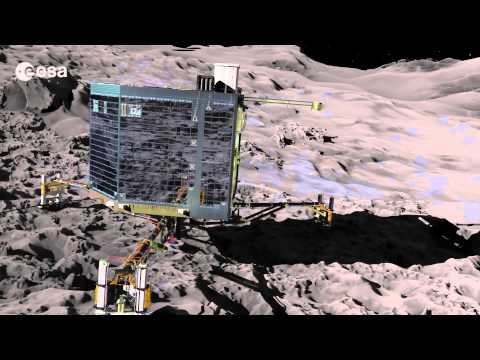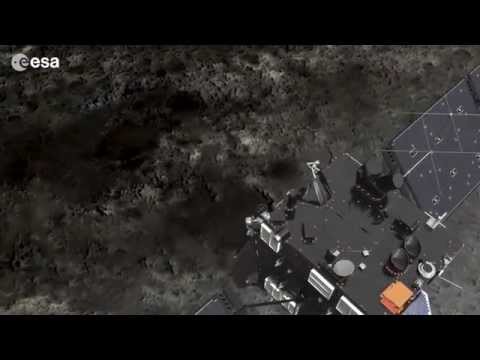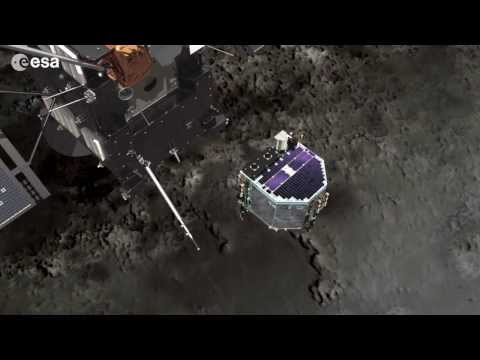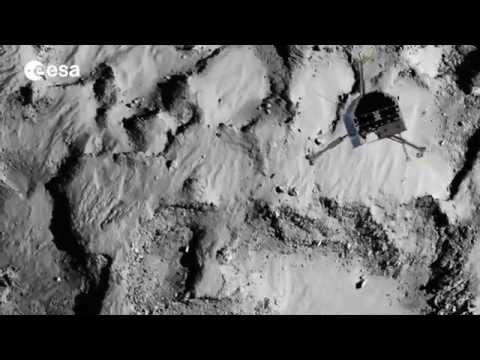Philae’s descent and science on the surface
Annotated version of the Philae’s mission at comet 67P animation.
The animation begins with the deployment of Philae from Rosetta at comet 67P/Churyumov–Gerasimenko in November 2014. It will take several hours for it to reach the surface. Because of the comet’s extremely low gravity, landing gear will absorb the small forces of landing while ice screws in the probe’s feet and a harpoon system will lock the probe to the surface. At the same time a thruster on top of the lander will push it down to counteract the impulse of the harpoon imparted in the opposite direction.
Once it is anchored to the comet, the lander will begin its primary science mission, based on its 64-hour initial battery lifetime. The animation shows a number of the science instruments in action on the surface.
Rosetta’s Philae lander is provided by a consortium led by DLR, MPS, CNES and ASI.
Credits: ESA/ATG medialab





I am impressed! We need to fund ESA more
Amazing stuff…
This is a very violent spacecraft, attacking the comet, shooting it with harpoon guns and drilling spikes into it, since the spacecraft will not leave the surface of the comet it will also be littering. You would think that the American's were doing this since there is so much gun shooting involved.
Cool!
This is pure science! We need much more of this. The only other time we try to find out more about the universe, try to develop new ways of doing things, try to expand our abilities is when we're having a war. Never as good as pure science. We are at our best as humans when we are exploring the universe. Go ESA!
For how much will Rosettas orbiting around the comet and its impact on the surface of the comet change its course?
Es ist erfolgreich gelandet! Es ist also möglich die Erde vor auf die Erde zudriftenden Asteroiden mittels modernster Technik zu schützen! Wie auch immer es ist machbar!
ESA >>>>>>>>>>> nasa
Oh, I get it… This clip is silent because there is no sound in space!
Analysis of sound waves?
Where the part where it vacuums
But this is computer animation. I like to see real images if possible.
Fail